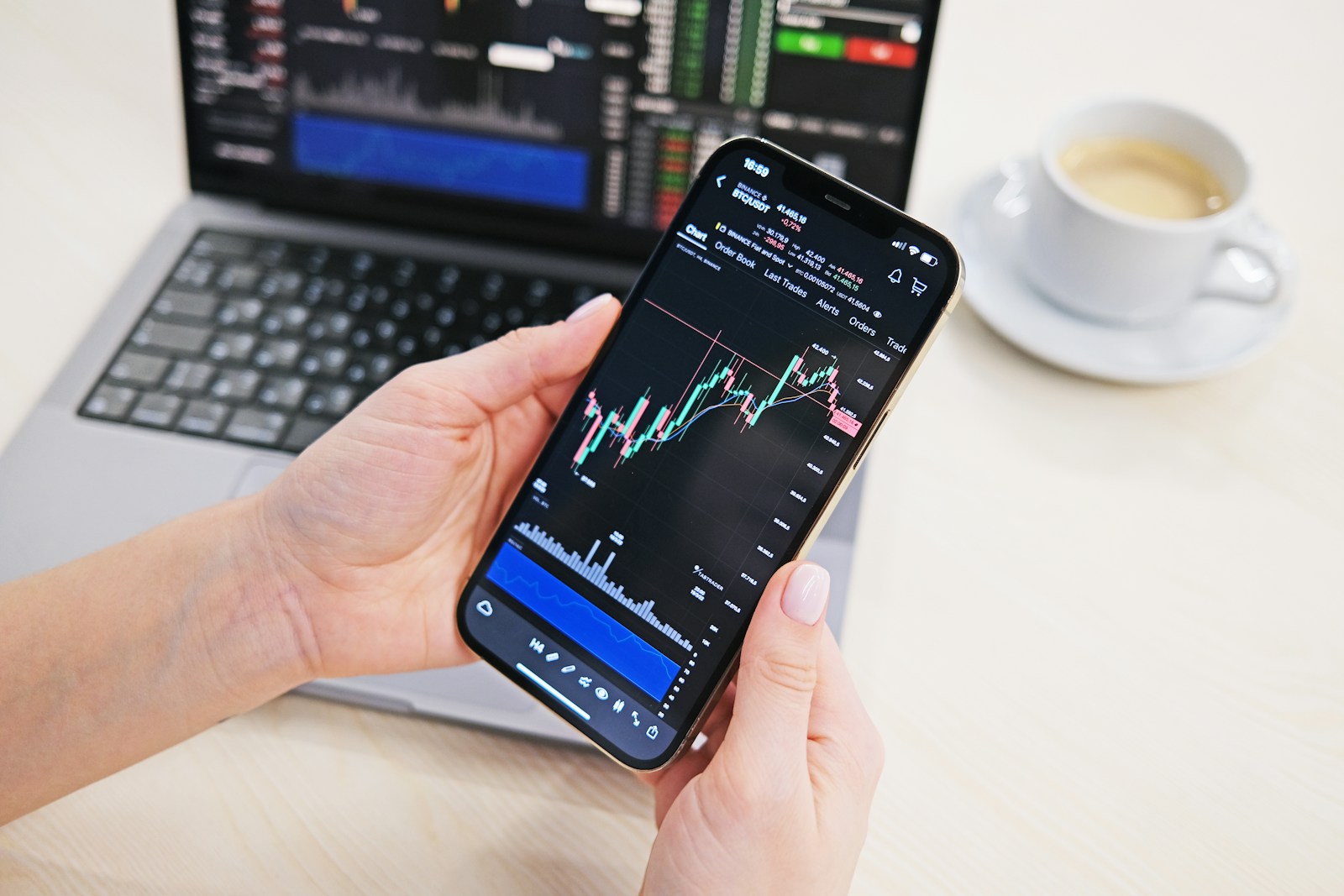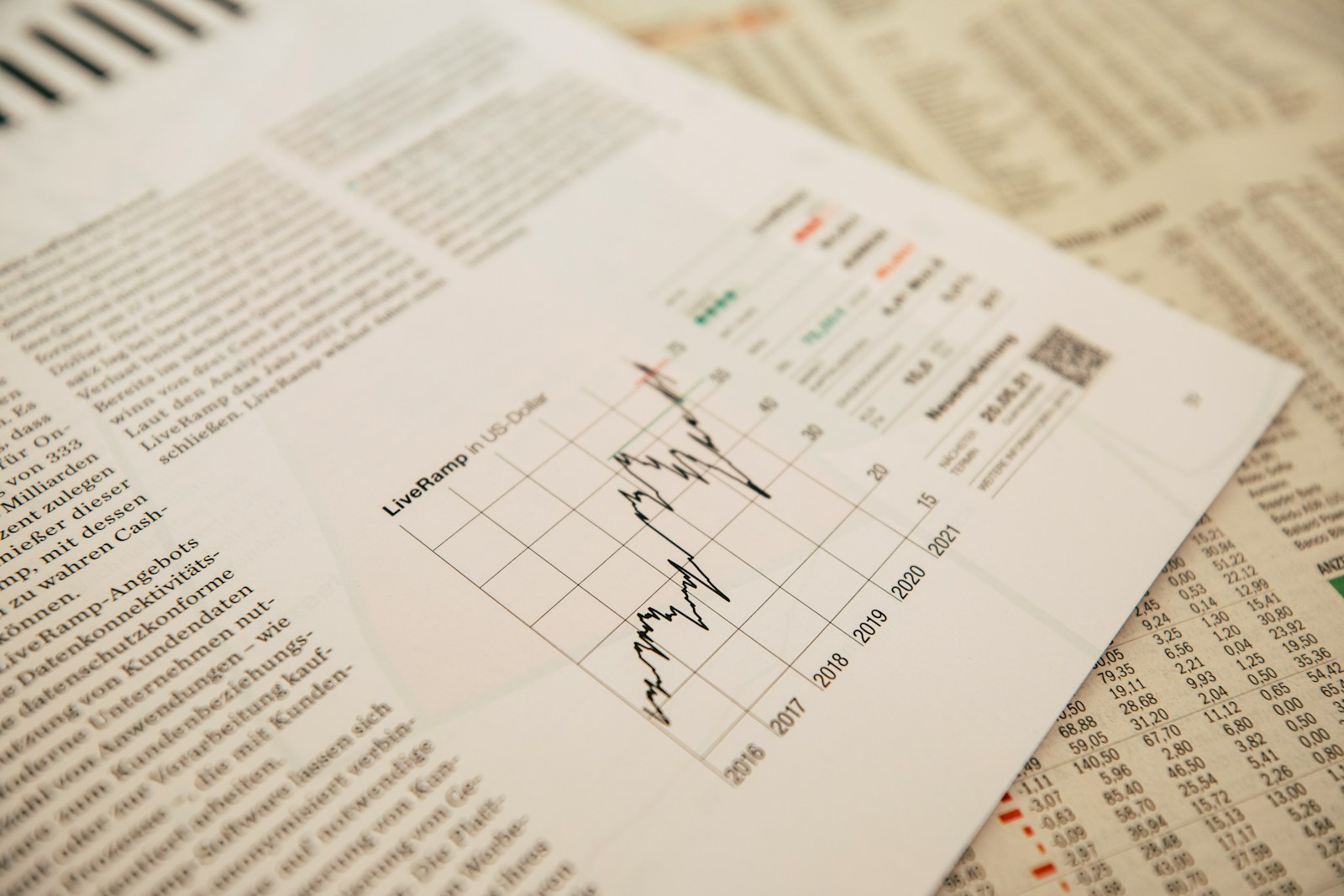
Liquidity directly impacts how prices form and evolve on trading platforms. High liquidity ensures tighter spreads between bid and ask orders, reducing slippage during large transactions. For example, Bitcoin’s top exchanges often show order books with depths exceeding $100 million within 5% of the mid-price, enabling smoother flow and more reliable pricing signals. Conversely, thin order books in altcoin markets generate frequent price gaps and erratic swings, making it harder to identify genuine market intentions.
The arrangement of buy and sell orders reveals underlying supply-demand dynamics that drive price action. By analyzing order flow patterns–such as iceberg orders or sudden spikes in aggressive market buys–traders can anticipate short-term momentum shifts. Recent research indicates that over 70% of intraday volatility in major cryptocurrencies stems from imbalances in limit order placement rather than external news. This highlights how structural elements within trading venues shape the trajectory of asset values.
Trading mechanisms and execution protocols influence how efficiently information translates into pricing adjustments. Decentralized exchanges (DEXs), for instance, rely heavily on automated market makers where liquidity pools determine rates algorithmically instead of traditional order matching. This creates unique dynamics compared to centralized venues where continuous auctioning aggregates diverse participant intents. Understanding these differences is critical when evaluating whether observed price moves reflect genuine demand or artifacts of execution design.
Recent fluctuations underscore the importance of dissecting market microstructure to interpret volatility correctly. During periods like May 2023’s sharp decline across multiple tokens, fragmented liquidity and asynchronous order flow caused exaggerated repricing beyond fundamental valuations. Traders who accounted for depth variations and time-weighted average prices managed risk better than those relying solely on spot quotes. Recognizing such nuances can prevent misjudgments about directionality amid complex exchange interactions.
How does one navigate this intricate web of interactions? Continuous monitoring of order book resiliency, paired with volume-weighted metrics, offers a clearer picture than headline indicators alone. Furthermore, contrasting centralized limit order books with DEX pool states provides insight into divergent pricing pressures affecting correlated assets simultaneously. Embracing these analytical perspectives enhances decision-making precision in an environment characterized by rapid flow shifts and heterogeneous participant strategies.
Market structure: understanding crypto’s price discovery [Trading & Investment trading]
Liquidity plays a pivotal role in determining how efficiently a digital asset’s value is established across different platforms. High liquidity ensures that orders can be executed with minimal slippage, allowing the flow of buy and sell transactions to reflect genuine supply and demand dynamics. For instance, Bitcoin’s average daily trading volume exceeded $30 billion in early 2024, supporting tight spreads and rapid adjustment of valuations to new information.
Order books provide insight into the distribution of interest at various levels, shaping short-term valuation shifts. The depth and concentration of limit orders impact how quickly prices adjust when sizable market orders are submitted. A fragmented order book with thin liquidity layers often leads to increased volatility during large trades, as seen in lesser-known altcoins where a single whale transaction can swing quotations by double-digit percentages within minutes.
Analyzing Flow and Its Impact on Valuation Mechanics
The continuous flow of transactions between market participants acts as the primary mechanism for integrating new data into prevailing rates. Trading venues with robust matching engines facilitate real-time assimilation of order imbalances, supporting prompt convergence toward consensus values. For example, decentralized exchanges such as Uniswap rely on automated market maker algorithms where liquidity pools determine token exchange ratios dynamically, contrasting with centralized exchanges’ traditional order-driven systems.
Price formation also depends heavily on the interplay between spot markets and derivatives platforms. Futures contracts contribute significant signaling effects by reflecting traders’ expectations about future conditions. The basis–the difference between spot quotes and futures prices–often highlights arbitrage opportunities or risk premia embedded in forecasts about volatility or regulatory developments. Monitoring these inter-market flows helps traders anticipate directional moves before they manifest fully on spot exchanges.
Structural elements like tick size regulation, minimum order sizes, and fee models influence participation incentives and consequently affect valuation efficiency. Smaller tick increments encourage tighter spreads but may increase noise from high-frequency activity; conversely, higher minimum order requirements reduce microstructure noise but can impede smaller investors’ engagement. Recent regulatory adjustments in major jurisdictions have sought to balance these factors to enhance price reliability without sacrificing accessibility.
Ultimately, comprehensive evaluation requires synthesizing data from multiple layers–order book snapshots, trade execution timestamps, volume-weighted averages–to construct an accurate representation of current value levels. Advanced analytics employing machine learning techniques have begun extracting latent patterns indicative of impending shifts or hidden liquidity pockets. Traders who integrate these insights with macroeconomic indicators stand better positioned to interpret transient dislocations versus sustained trend changes in asset quotations.
Order Types Impact on Price
Limit and market orders play fundamentally different roles in shaping the dynamics of trading flow and liquidity. Market orders consume available liquidity instantly, pushing execution through the order book at the best available price. This immediate fulfillment often leads to quick adjustments in valuation levels, especially during periods of low depth or heightened volatility. For instance, a large market buy order on a thinly populated exchange can cause a sharp upward shift in valuation within seconds, reflecting how aggressive orders drive rapid shifts.
In contrast, limit orders contribute passive liquidity by resting on the order book until matched by an incoming market order or canceled. These standing offers form the foundation for gradual price formation and discovery. When numerous limit orders cluster around specific levels, they create support and resistance zones that moderate fluctuations and allow for more orderly transitions in pricing trends. Recent analyses of Bitcoin futures markets show that increased density of limit orders near key technical points reduces short-term volatility by up to 15% compared to periods dominated by market orders.
Order Flow and Liquidity Interaction
The interaction between order flow types directly influences valuation trajectories. Aggressive orders (market) consume liquidity, leading to immediate transactions but thinning out resting interest on one side of the book. Conversely, passive orders (limit) replenish liquidity but require counterparties willing to cross spreads for execution. This balance affects spread width–tight spreads typically indicate abundant limit orders supporting efficient matching, while wider spreads suggest scarcity of passive interest and potential for larger slippage costs.
Consider Ethereum’s decentralized exchanges where automated market makers (AMMs) replace traditional limit order books with liquidity pools. Here, price changes occur as trades alter pool ratios rather than consuming discrete limit offers. While this system provides continuous pricing without traditional book depth constraints, it also introduces impermanent loss risks and can amplify valuation swings when large swaps disproportionately shift pool balances.
Stop-loss and iceberg orders add complexity by modulating timing and visibility within transaction streams. Stop-loss triggers convert into market orders once certain thresholds are breached, potentially accelerating downward or upward momentum under stress conditions–a phenomenon observed during sudden corrections like May 2021’s crypto sell-off where cascading stops intensified drawdowns. Iceberg orders conceal true volume size by revealing only partial quantities at a time, affecting perceived supply-demand equilibrium and sometimes misleading short-term sentiment about actual liquidity availability.
The cumulative effect of diverse order types creates a layered ecosystem influencing price evolution beyond simple transaction counts or volumes. Sophisticated traders exploit these nuances by placing strategic limit layers or timed stops to manage exposure against flow-induced shocks. Understanding these mechanics is essential for anticipating momentary imbalances and estimating realistic transaction costs amid varying participation intensities across venues worldwide.
Role of Liquidity Pools
Liquidity pools serve as fundamental components in decentralized exchanges by enabling continuous trading without the need for traditional order books. These pools aggregate assets from multiple providers, creating a reservoir of liquidity that facilitates seamless asset swaps and reduces slippage. For example, Uniswap’s automated market maker (AMM) model uses liquidity pools where token pairs maintain a constant product formula (x*y=k), which ensures that each trade adjusts prices dynamically based on supply and demand within the pool itself. This mechanism directly influences the flow of orders and helps establish more efficient trade execution across various tokens.
The influence of liquidity pools extends beyond mere transactional convenience–they shape how price signals propagate through decentralized venues. By aggregating large volumes of capital, these pools minimize bid-ask spreads, thus allowing faster convergence to equilibrium prices compared to thinly traded markets. Empirical data from platforms like SushiSwap demonstrate that pools with higher total value locked (TVL) tend to exhibit more stable pricing patterns and tighter spreads, which enhances overall price discovery processes. However, this stability depends heavily on the balance between different token reserves and external arbitrage activities that link pool prices to broader market valuations.
Implications for Trading Dynamics
Order flow in environments reliant on liquidity pools differs significantly from centralized counterparts due to the absence of a traditional limit order book. Instead, trades execute against existing liquidity using AMM formulas, which can cause nonlinear price impact during large transactions. In practice, this means traders must consider potential slippage and impermanent loss risks when interacting with deeper or shallower pools. Case studies such as Curve Finance highlight how specialized stablecoin pools optimize for low volatility by maintaining tightly correlated asset ratios, thereby improving the precision of pricing signals and reducing disruptive fluctuations during high-frequency trading periods.
Recent developments also emphasize cross-pool liquidity aggregation protocols designed to enhance capital efficiency and reduce fragmentation across fragmented decentralized venues. By routing orders through multiple interconnected pools, these systems attempt to maximize execution quality while minimizing price deviation from underlying fundamentals observed in centralized benchmarks like Binance or Coinbase Pro. Consequently, understanding the interplay between pooled liquidity depth, order flow mechanics, and arbitrage strategies becomes indispensable for professionals seeking accurate valuation frameworks within decentralized ecosystems.
Identifying Market Makers’ Actions
Accurately pinpointing the activities of liquidity providers in cryptocurrency trading requires close examination of order book dynamics and transaction flow. These actors frequently place large bid and ask orders, maintaining tight spreads to facilitate continuous exchange while managing inventory risk. A sudden surge in resting limit orders on one side, followed by incremental executions, often signals deliberate attempts to control the balance between supply and demand without causing abrupt price shifts.
Analyzing trade timestamps alongside volume clusters reveals patterns characteristic of professional intermediaries influencing asset valuation. For instance, during periods of low volatility, stable high-frequency quoting combined with rapid cancellations points toward strategic liquidity provision rather than genuine speculative interest. This behavior supports efficient market functioning by smoothing out transient imbalances but also obscures true directional intent from casual observers.
Order Flow Indicators and Execution Strategies
One reliable metric involves tracking the ratio between aggressive market buys and sells over short intervals. Market makers tend to absorb incoming pressure by offsetting aggressive trades with counter-orders that replenish depth at key price levels. This interaction produces a signature pattern: increased trade volume accompanied by minimal net movement in price metrics such as mid-price or volume-weighted average price (VWAP). For example, during the 2023 Bitcoin options expiry window, several exchanges exhibited heightened quote revisions coupled with subdued underlying asset swings.
Volume delta analysis–calculating the difference between buying and selling volumes–can further differentiate genuine directional pushes from liquidity replenishment activities. In cases where volume delta remains near zero despite elevated trading velocity, it suggests that dealers are actively balancing flows rather than initiating trend changes. Such insights assist traders in anticipating short-term support or resistance zones shaped by these intermediary actions.
The microstructure of electronic order books also reveals telltale signs through layered liquidity placement techniques. Market makers often stagger limit orders in incremental sizes across several ticks around prevailing prices to create a buffer zone reducing vulnerability to adverse selection risks. This approach was notably observed during Ethereum’s transition phases when network upgrades triggered spikes in volatility but saw consistent quote layering helping maintain orderly execution conditions.
Comparative analysis across various platforms demonstrates discrepancies in how different venues attract or repel professional liquidity participants based on fee structures and latency advantages. Some decentralized exchanges exhibit thinner order books yet higher turnover ratios due to algorithmic market-making bots aggressively capturing arbitrage opportunities amid fragmented pricing. Recognizing these venue-specific characteristics enhances understanding of where informed flow originates and how it shapes broader asset value formation processes.
Impact of High-Frequency Trading
High-frequency trading (HFT) significantly influences the mechanisms through which asset values are established in cryptocurrency environments. By executing a vast number of orders within milliseconds, HFT strategies enhance transactional throughput and contribute to tighter bid-ask spreads. This acceleration in order processing heightens market efficiency, allowing price signals to adjust rapidly to new information. For instance, studies reveal that on exchanges with prominent HFT activity, liquidity metrics improve by up to 30%, reducing slippage and promoting more accurate valuation benchmarks.
The architecture of trade execution under HFT introduces complex dynamics into exchange ecosystems. Algorithms constantly scan order books across multiple venues, exploiting minute discrepancies in pricing and volume distribution. Such cross-platform arbitrage enforces a form of synchronization between disparate liquidity pools, thereby compressing temporal gaps in price adjustments. However, this increased interconnectivity also renders the system sensitive to latency differences and microstructure noise, which can induce transient volatility spikes during periods of extreme order flow imbalances.
Technical Aspects and Market Behavior
From a technical perspective, HFT impacts short-term supply-demand equilibrium by strategically placing and canceling orders at high speeds–a practice known as “order layering” or “spoofing” when manipulative. While regulatory frameworks aim to curtail abusive tactics, legitimate algorithms facilitate continuous rebalancing of price levels based on real-time data input. Empirical evidence from recent crypto exchange reports shows that during peak trading hours, over 70% of executed trades originate from automated systems deploying HFT protocols, underscoring their dominance in shaping immediate transaction costs and depth.
Liquidity provision through HFT also shifts the functional landscape for institutional participants versus retail traders. Institutions benefit from reduced transaction fees and minimized exposure to adverse selection risks due to enhanced market responsiveness. Conversely, less sophisticated actors may face challenges due to rapid order book changes that complicate manual trade execution. This divergence raises questions about equitable access within electronic venues and demands ongoing scrutiny concerning transparency standards and fair order handling practices.
Examining recent case studies such as the May 2023 Ether flash crash reveals how concentrated bursts of HFT-driven order cancellations can trigger cascading effects on asset quotations. During this event, liquidity evaporated momentarily as algorithms withdrew bids simultaneously, causing prices to deviate sharply before recovery ensued once normal flow resumed. These episodes highlight both the benefits and vulnerabilities introduced by high-speed algorithmic participation–facilitating efficient price alignment yet exposing structural fragilities inherent in ultra-fast trading environments.
Price gaps and volatility causes
Price discontinuities often emerge from abrupt shifts in order flow and liquidity imbalances. When significant buy or sell orders overwhelm resting limit orders, the resulting mismatch creates gaps on the trading chart. For example, during off-hours or low-liquidity periods, such as weekends or holidays, fewer participants contribute to market depth, making it easier for large trades to push prices sharply without intermediary steps. This dynamic is particularly visible in less mature exchange platforms where fragmented liquidity pools exacerbate these jumps.
Volatility spikes frequently arise from sudden changes in information dissemination that alter traders’ expectations simultaneously. A notable case occurred with Bitcoin futures expiration dates when contract settlements triggered cascades of liquidation orders across venues with varying liquidity profiles. Such coordinated activity disrupts continuous price movement and triggers sharp oscillations within seconds, highlighting how structural factors like fragmented order books and asynchronous data feeds contribute to rapid fluctuations.
Order book dynamics and liquidity concentration
The configuration of the order book directly influences volatility by shaping how price levels react to incoming market orders. Thin order books with shallow bids and asks provide limited resistance against aggressive trading strategies, which increases susceptibility to slippage and gaps. Conversely, concentrated liquidity at discrete price points can delay price adjustments but may eventually lead to larger jumps once those levels are breached. Empirical analysis from decentralized exchanges reveals frequent micro-gaps caused by sporadic liquidity deposits that differ substantially from centralized venues with steadier flow patterns.
Trading algorithms also play a critical role in amplifying or dampening volatility through their reaction times and execution logic. High-frequency strategies that attempt to predict short-term order flow tend to cluster around key support-resistance zones, creating layered defenses against large moves. However, when algorithmic models misinterpret signals–such as during unexpected regulatory announcements–mass cancellations or rapid repositioning can remove available liquidity en masse, producing cascading price gaps observable across correlated assets.
Recent studies confirm that volatility clusters correlate strongly with periods of reduced participant diversity and increased concentration of capital among few entities controlling sizable order volumes. The resulting feedback loops between supply-demand mismatches and real-time adjustments generate nonlinear effects in price trajectories. Monitoring these conditions through advanced metrics like order imbalance ratio and effective spread provides actionable insights for anticipating gap occurrences before they materialize on charts.
Conclusion: Leveraging Volume Analysis for Optimal Entry Points
Precise evaluation of order flow and volume dynamics reveals critical insights into liquidity pockets that often precede significant price shifts. By monitoring sudden surges in trading activity aligned with structural support or resistance levels, traders can anticipate directional moves with higher probability. For instance, spikes in volume around $30 million on a mid-cap altcoin paired with narrowing bid-ask spreads frequently signal accumulation phases before breakout attempts.
Volume alone isn’t sufficient; its interaction with orderbook depth and execution speed defines the true flow of market interest. Recent data from decentralized exchanges highlight how fragmented liquidity across multiple venues complicates traditional metrics, demanding integrated analysis to pinpoint authentic momentum. Incorporating volume-based algorithms alongside real-time orderbook snapshots enhances entry timing and risk assessment, particularly amid fast-evolving volatility clusters.
Implications and Future Directions
- Order Flow as a Leading Indicator: Incorporating microstructure signals such as iceberg orders or hidden liquidity layers can refine entry point predictions beyond surface-level volume spikes.
- Dynamic Liquidity Mapping: Advanced tools mapping cross-exchange volume flows will become indispensable, especially as arbitrage opportunities tighten and market fragmentation intensifies.
- Algorithmic Adaptation: Adaptive models utilizing machine learning to interpret evolving volume patterns promise improved detection of transient imbalance periods where swift entries yield outsized returns.
- Contextual Volume Interpretation: Distinguishing genuine buyer interest from wash trading or spoofing requires sophisticated filtering mechanisms embedded within analytic frameworks to prevent false signals.
The intricate relationship between transaction size, execution velocity, and underlying structural factors remains central to optimizing entry strategies. As protocol upgrades enhance transparency in order dissemination and trade reporting, expect an elevation in precision when assessing liquidity distribution and flow dynamics. Ultimately, mastering these variables offers a competitive edge–transforming raw volume data into actionable intelligence that anticipates market turns rather than reacts to them.








